Resources
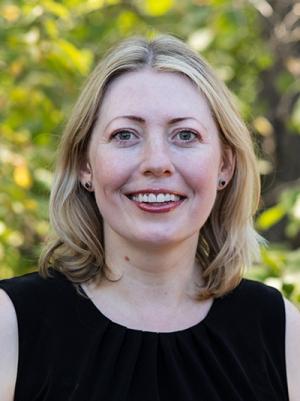
In the history of Christian thought, suffering has frequently been conceptualized as a process of “refinement.” Suffering “refined” believers and religious communities by (painfully) stripping away the unnecessary, as well as by revealing and perfecting the core dimensions of religious practice. I am writing this on the first day of the Spring Break—normally a time to slow down and reinvigorate oneself in the midst of a busy semester. However, this year it also comes in the midst of the global Covid-19 outbreak. In the state of Oregon, where I teach, the governor issued the stay-at-home order this morning. All universities in my state had temporarily shut down last week, and my institution is moving from face-to-face to fully online delivery. This is also the case with many universities across the country. Instead of refreshment, Spring Break has brought an accelerated work pace, deep concern for our families and communities, and a host of uncertainties about what lies ahead. As a teacher, alongside my colleagues, I am working to determine the best ways of adjusting our traditional face-to-face classes to alternative modes of delivery. As a theologian who studies the history of Christian theologies of suffering and healing, I cannot help but think of the Covid-19 crisis as a reality painfully refining our pedagogies, stripping away the obsolete and revealing and perfecting the essential dimensions. I am not suggesting that this global health disaster is somehow a positive force in the history of higher education (or humanity in general). I mourn the lost lives and the health, economic, and social tolls of this pandemic, the full extent of which we are yet to experience. At the same time, I am convinced that, as self-reflective educators, we are called to think creatively, including about negative factors, and, without denying the harm, still imagine possibilities of a positive impact they might bring upon our practice of teaching. By, painfully, taking away our more conventional models of instruction, the current crisis might refine essential, but at times, neglected core dimensions of a vibrant pedagogy; one that includes innovation and creativity, meaningful connection with our students, and awareness and responsiveness to wider cultural questions. As Covid-19 forced classes to move online, it presented faculty with a novel challenge of adjusting all face-to-face courses for remote delivery. As I ponder the best practices of successfully conducting my undergraduate honors seminars over Zoom, these sustained deliberations yield new pedagogical insights and highlight some deficiencies of the ways I have taught this class in a traditional format. The Covid-19 challenge pushes us to exercise renewed pedagogical creativity with our courses, which we are being forced to re-examine, reform, and even re-invent afresh. The recent days have brought a heightened awareness of many students’ daily sacrifices in pursuit of a college degree. I learned of some of my students’ lack of high-speed Internet access in their homes, of others’ inability to afford plane tickets, and yet others’ struggles with academic demands due to anxiety, intensified due to the outbreak. Covid-19 and the resulting academic adjustments have fostered a new, more meaningful, level of knowing my students, understanding their unique needs, and therefore being better able to teach, mentor, and support them. In an academic era anxious about the relevance of the humanities, the daily disruptions of Covid-19 may present students with intellectual opportunities to develop their own responses to the crisis in relation to the humanies’ rich traditions of making meaning of and resisting suffering. As instructors, we might intentionally make space in our courses to integrate questions exploring such connections between the past and the present (expressed in world religions, literature, philosophy and art). After all, this profound and unsettling crisis might yield unexpected refinements of our students’ pursuits of knowledge and justice, akin to its refining of our own teaching craft. (This blog has previously appeared on the University of Chicago’s Craft of Teaching the Academic Study of Religion blog.)
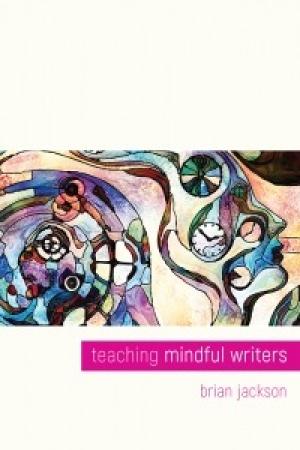
Teaching Mindful Writers introduces new writing teachers to a learning cycle that will help students become self-directed writers through planning, practicing, revising, and reflecting. Focusing on the art and science of instructing self-directed writers through major writing tasks, Brian Jackson helps teachers prepare students to engage purposefully in any writing task by developing the habits of mind and cognitive strategies of the mindful writer. Relying on the most recent research in writing studies and learning theory, Jackson gives new teachers practical advice about setting up writing tasks, using daily writing, leading class discussions, providing feedback, joining teaching communities, and other essential tools that should be in every writing teacher’s toolbox. Teaching Mindful Writers is a timely, fresh perspective on teaching students to be self-directed writers. (From the Publisher)
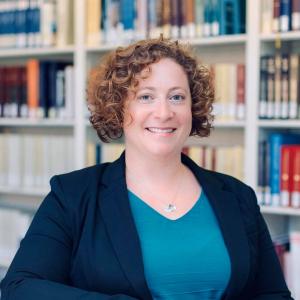
The most important pedagogical practice I have engaged in during this time of pandemic stress and isolation is making sure to check in with my students. At the beginning of every class, after we pray, I poll the students to find out how they are doing. Responses are anonymous (though have I have had many students email me to follow up about their answer, letting me know which responses were theirs). This honors the humanity of my students and gives me the opportunity to know what is in the Zoom room with us when we are trying to learn together. This also gives the whole class the opportunity to know how we can pray for the members of our learning community. My school moved to online learning the week of March 16. Each week I have asked different questions and offered different ways to engage while also offering space for how my students are coping. I have maintained four core questions: How am I doing in general? How am I feeling about my work in this course? What else do I need my professor to know? How am I feeling? This past week, I added a question about how they were feeling about the end of the semester. The week after Easter I asked students to share where they had seen signs of hope and new life. I have shared with my students that the most important thing right now is their mental, spiritual, and physical health. Not their schoolwork, not even for my class (I’m teaching my favorite class this semester and everything!). Taking time at the beginning of each synchronous learning time shows them that I am serious about that. When I ask students how they are doing in general, I have a multiple-choice response and one of them is “falling apart, like the world around me.” As their professor, I need to know when I have students who feel like they are falling apart. Not only do I take the opportunity to remind them that I am praying for them, but I also remind them that this is a perfectly normal response to a highly stressful situation and encourage them to seek help. I also get to remind myself that talking about course material might matter very little to the students who share that they feel this way. When I ask students how they feel about the course itself, I have another multiple-choice response option. One of those responses is “Help! I’m drowning!” I need to know when students feel like they are drowning in coursework. Just like me, my students are strapped for time to get work done and may often get interrupted by family members (including small children). Just like me, they may experience brain fog sometimes. When I know students feel like they are drowning, I can offer them a lifeboat. Do they need me to cut out some readings? Extend a deadline? Read a draft because they can’t tell if they are on the right track? Right now, my policy is that I will be as flexible as I possibly can with students; but if I don’t know that they need flexibility, I can’t offer it. When I ask students how they are feeling, I receive answers in the form of a word cloud. Each class these word clouds are profound, real, and heartbreaking. They are works of art reminding us of our humanity and the humanity of our peers in the classroom. We are tired, anxious, and stressed. We are worried and grateful. We are excited about graduating and devastated that it won’t be happening like we’ve been dreaming of for years. We are happy. We are sad. In a normal semester at the beginning of class, I ask students “How are you all doing today?” I usually receive short answers that are varying shades of “fine.” But this is not a normal semester, and we need more opportunities to check in and care about each other. We need to know that we are valued for more than our productive output in the classroom. What I am teaching my students through this practice is that I care about them as people, and I care about and honor whatever they are going through. As a seminary professor, this lesson is at least as important as the pedagogical content of my courses.
What if this moment of waiting is full of meaning and seeing, anew? Fostering ways of knowing, nimbleness, and sensitivity for teaching and the teaching life. Dr. Nancy Lynne Westfield hosts Dr. Michael Shire (Hebrew College).
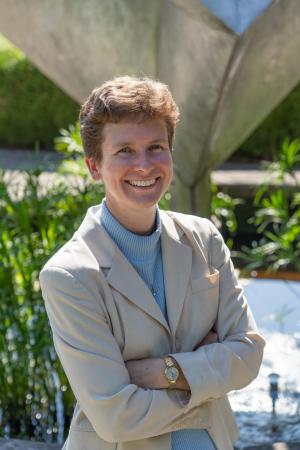
Covid-19 is not the first crisis through which I’ve taught. The past year has been one of intense personal crisis for me, and I’ve had to keep teaching right through it. Now we’re all in personal crisis. Everyone is doing a new thing in higher education. No one was prepared for this, we’re all learning how to do it, and we’re not doing it in a vacuum. Many of us are suddenly in crisis; people we know and love may be out of jobs or ill with Covid-19, or suffering in some other way. I have learned an important thing in this past year: When in personal crisis and needing to keep teaching, I have to change my expectations of myself. When I am in crisis, I will not be everything I think I should be as a teacher. (Even when I’m not in crisis, I will not always be everything I think I should be as a teacher.) In crisis, though, I have to let go of those expectations and get realistic. I will not have energy to meet with every student about his or her paper drafts like I usually manage to do. I will not have energy to create an imaginative new assignment or even, perhaps, a new exam. I will not have energy to have lunch with students every week to get to know them better. My energy will be expended by caring for myself—making sure I eat properly, see supportive friends, and work through my own stuff. There will only be so much energy left after those basic things. I have to make energy choices. Am I caring for myself before my students? Yes. In the same way that airline attendants insist we put the oxygen masks on ourselves before we put them on our children. If I am taking care of myself, I am some good to my students. If I ignore myself in order to do the things I think I should be doing, I will be no good to my students because I will be exhausted inside of a month. Start by checking in with yourself. Reflect on where you are and what you need. What are you thinking and feeling? What do you need for your physical health? What do you need for your mental and emotional health? What structures will enable you to feel somewhat stable and keep moving? Who do you need to help you? Once you’ve established where you are and what you need in this moment (and these things may change day-to-day), take steps to put these things in place. Get yourself set. Then look at your syllabus. What are the 2-3 things you most want your students to get from class? What on your syllabus will accomplish those? What can you cut and still make sure students receive those things? If you’re reading this blog, you’re a good teacher. Because you are a good teacher, even if you cut some things, your students will still have a good experience and learn what you want them to learn. Readers of this blog are professors who care about our students. We want to do well by them, to teach and mentor for their lives. This means we probably have exceptionally high standards for our teaching. We are probably inclined to forge ahead trying to make this new learning environment work for our students or even to make sure they have what they need in their personal experience of the crisis. But if we forget to attend to ourselves, we’ll pass out from exhaustion before we have a chance to help our students.
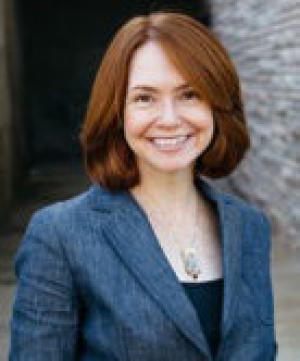
What simple gestures and accommodations at the end of a semester can lighten the load without compromising teaching and learning? Educators expect waning energy as a semester and academic year conclude. Students are overwhelmed trying to finish overdue assignments, final projects, and exams. Faculty are at the breaking point with grading, administrative tasks, and work/life balance. While student energy for learning flags, most faculty tap into their very last teaching reserves to end courses in the best possible spirit. This normal rhythm of attenuating energy is intensifying in the Covid-19 crisis. End of year celebrations like graduation are not there to provide momentum, needed affirmation, and closure. Educators have become a last line of continuity and support for increasingly vulnerable students. We are teachers turned life-coach, counselor, parent, and pastor. All the while, grief and loss are mounting on every side. Here are four simple ways to lighten the teaching and learning load to finish well: Take a hard look at any remaining assignments left in the semester. Chances are, only one or two assignments are crucial assessment indicators for final grades. In one of my courses, it is a final exam. In another, it is an accumulative writing project. Other smaller-scale learning assignments that support student engagement and course tracking won’t impact an overall course grade to any significant degree. In the last few weeks of teaching, be transparent about which few assignments are crucial to finishing well in order to lighten the teaching and learning load. In one course, I’ve made other assignments optional or extra credit. In another, I’ve made select assignments pass/fail. Options and clarity help students make informed decisions about where they should focus their waning energy, and faculty can save significant time doing less low priority grading. Diversify ways an assignment can be submitted. In one of my courses, students are required to write a formal film review. I’ve offered them the alternative of submitting a slide presentation with audio narration. Or they can choose a creative project connecting a film’s themes to the challenges of Covid-19. Different choices allow students to meet assignment objectives with less fatigue and anxiety or less intensive editing help from remote support services. Including opportunities to connect with Covid-19 fosters learning engagement and helpful conversations in their life circles. Students reveal surprisingly diverse and creative communication skills when modes of presentation are flexible. And diverse submissions make the drudgery of grading … almost … fun. Allow students to partner with peers on assignments. In one of my courses, students were writing individual reviews on one of three books to complete the semester. Fifteen papers to write, fifteen papers to read and grade. I adjusted the assignment and asked students reading the same book to submit one review written collaboratively. They divided tasks and wrote with improved shared insight while bolstering their peer-to-peer relationships weakened by less classroom interaction. Overall, shared grades were higher, everyone benefited, and I graded 3 book reviews instead of 15. Most important: reassure, reassure, reassure. Students need a strong ongoing word of encouragement to finish well. Let them know expectations and goals are shifting and simplifying in response to Covid-19. I remind students at every possible moment that their singular task is to stay engaged in course learning to the degree they are able and maintain good communication about their circumstances and needs. In return, it is my responsibility to make sure they have every possible opportunity to finish their courses well. Reassurance means hosting conversations on Zoom or other discussion platforms about specific challenges or griefs impacting students’ lives. Reassurance means reminding them that, even in very uncertain times, they have value and gifts and a future. Reassurance means sharing our passion for our area of study and its resourcefulness during a pandemic. Reassure, reassure, reassure. It is less time intensive than grading, and it will help students reach the finish line with wellbeing in mind. Teaching and learning are life-giving and can be a lifeline. Though our energy is low, and our grief is high, we can do some simple things to ease the load and finish well.

There's an old adage that says "The worst teaching method is the one you always use." We may consistently use a particular teaching method because "it works," or, because we may be unaware of other methods that can help engage students to bring about learning outcomes. Admittedly, we sometimes don't use a greater variety of methods because we fear risking that it may not work, students may not like it, or, it's beyond our comfort zone. Expanding our teaching repertoire by offering a greater variety of student learning methods and activities is not about making things interesting or entertaining (though those are not bad in themselves). Learning activities: Tap into multiple intelligences Increase student engagement Aid in concepts-attainment Help tap into different facets of understanding (Explanation, Application, Interpretation, Perspective, Self-knowledge, Empathy) Provide an opportunity for application Tease out creativity Help students make connections (the brain learns by making connections) Help students retain what they have learned (if a student has not retained it, they haven't learned it). Attached is a Student Engagement Methods checklist that can help expand your teaching repertoire. Methods applicable to the online learning environment are identified by an asterisk. Note that most classroom learning methods can be applied to the online virtual context to some extent or in some form. Review the checklist and check those methods you use most frequently. Then, check those methods you have never used. Finally, review the list to determine which (new) methods can serve as effective student engagement learning activities that can help your students achieve your course or lesson learning outcomes. Be adventurous, try something new!
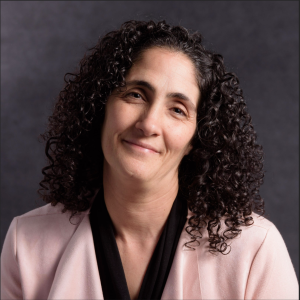
At first blush, the rest of the world’s shift to virtual learning in March seemed immaterial to our constituents who are in a heavily online MA in Jewish Education. We are lucky to boast well-trained and experienced online faculty and, perhaps even more important, students who are whizzes with Zoom, Schoology, and an array of online educational tools. Our people are at home in their virtual academic community. They already knew to mute themselves when not speaking in a teleconference, so we were really ahead of the game! Honestly, we felt immune to the whiplash others were experiencing with the very abrupt shift to online teaching and learning. And yet, ‘business as usual’ has been very UNusual. As a parent of three myself, I was quick to recognize the double demands that would be placed on working parents. This affects both our faculty and student body, many of whom are caring for young children and/or aging parents while working full-time in Jewish education. With childcare centers closed and many dual-career families trying to work remotely, this complexity appeared on our radar quickly. A few weeks after moving all courses online, we announced that Hebrew College would not be holding an in-person graduation in June. Especially for distance students, who cannot wait to finally bring their families to campus, hug their classmates and teachers, and wear a cap and gown to symbolize all that they have invested in their degrees, this was a huge blow. And now, we have gone from a trickle to a steadier flow of job losses, furloughs, and professional uncertainty. For the soon-to-be-graduates, many have gone from looking at the many pathways forward for their careers to worrying about their next paycheck in their current role. Even though our students are well-versed in learning online and forging and maintaining deep relationships over Zoom and FaceTime, this experience has been difficult. And so, I imagine for those faculty and students for whom virtual learning is new, and are experiencing the same stressors and uncertainties as I’ve described, this experience is multi-layered and fraught. With that in mind, I’d like to share my approach to graduate education, which builds on what I’ve learned over a decade-plus teaching virtually and adapts it for the moment at hand. • Focus first on the ‘extracurricular.’ With so much uncertainty and added stress in their personal and professional lives, students need to use the reflective space of the classroom to process their experiences—and to channel them into future material for growth. To my mind, this now trumps any other course objective. Once grounded and feeling seen (and this must happen repeatedly throughout the crisis), students will have greater capacity to engage in the material and hopefully reach many of the original course objectives. Do this by creating distinct spaces and times for processing and opportunities to grieve for whatever feels lost—this may be one-to-ones with faculty, a discussion board set aside for this purpose only, and/or facilitated/recurring peer conversations. These multiple entries allow for all types of processing so that students can find their comfort zone. • Uncoverage over coverage. Given time lost in the shift to online learning, and significant class time invested in shoring students up by reinvesting in relationships and care, it seems impossible that everything can still be covered. Though I toyed with it briefly, I shied away from upping the expectations of time for my course this spring in recognition of the physical and emotional work so many students were balancing on the home front. So, I focus on uncoverage rather than coverage. What happens when we let go of covering every thinker in a time period? Does it allow us to delve more deeply into one theologian? Or perhaps explore a single theme across many generations of thinkers? Allowing students the space to unpack (or uncover) texts, analyze them critically, and relate them to what’s happening in their lives today may make for better integration and assimilation of the material in the end. • Expect less, but give more. Where you can, lighten the reading load by removing a non-essential reading, mark one or more tangential sessions optional, and let students know that you will approach their work with an especially generous heart this semester. This is not meant to suggest compromising our academic standards, but to adjust them in places where flexibility exists. Recognize that students may have less to give academically but at the same time need more mentorship, empathy, and care—and try to navigate your own personal-professional juggle to accommodate those needs. To me, this is the most important thing I will ever teach my students. As teachers of theology, religion, religious education and thought, we have an added responsibility—and privilege—to create caring communities that recognize the holistic nature of our students’ lives. I am always mindful that when I teach these students, who are themselves the shapers of young Jewish hearts and minds, I am modeling both a pedagogical and ethical approach to creating a classroom community—be it ‘real’ or really virtual.
What if scholarly endeavor was about podcasting? Twenty-first century knowledge production and making intellectual products accessible means podcasts! Dr. Nancy Lynne Westfield hosts Dr. Leah Payne (George Fox University).
Wabash Center Staff Contact
Sarah Farmer, Ph.D
Associate Director
Wabash Center
farmers@wabash.edu